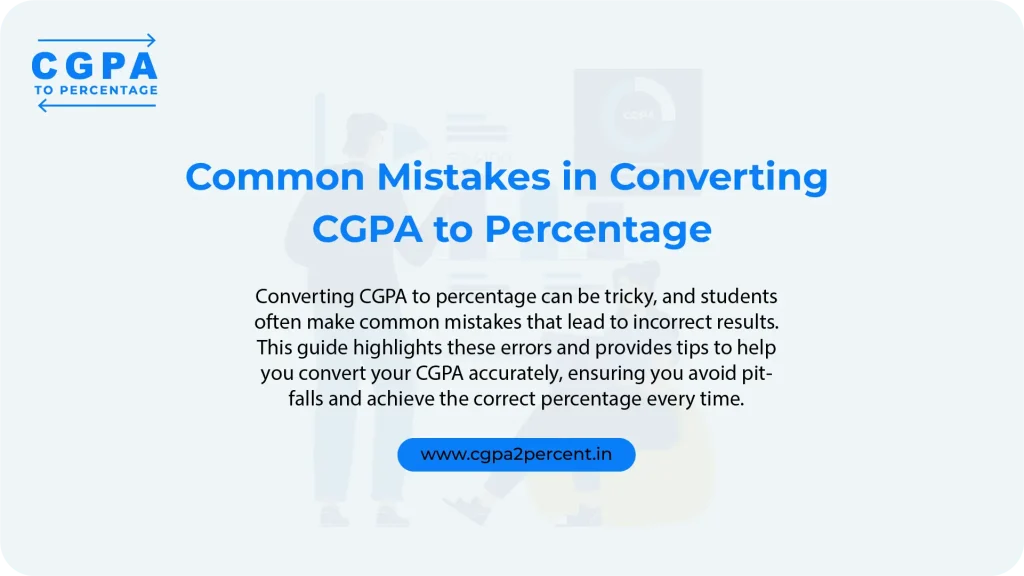Common Mistakes While Converting CGPA to Percentage
Indian students often need to convert their grades due to the diverse education system. Mostly, they need to convert CGPA into Percentage. This is necessary, especially when applying for Government or private jobs and higher education. However, students may face challenges in the conversion process. We will discuss some common mistakes that students could make while calculating percentage from CGPA.

Understanding the Basics: CGPA vs. Percentage
Let’s understand the key difference between the CGPA and Percentage.
- CGPA is a grading system that stands for Cumulative Grade Point Average. It’s often used in schools and colleges to represent a student’s academic performance.
- Percentage represents the score out of 100. Many institutions still use this format to evaluate students’ performance.
In India, the conversion from CGPA to percentage on a 10-point scale typically follows a standard formula:
Percentage=CGPA×9.5
This multiplier (9.5) is derived from statistical analysis so that the process could be standardized. However, different universities may use different conversion formulas, so it’s important to verify the specific method used by your institution.
Common Mistakes to Avoid in CGPA to Percentage Conversion
1. Using the Wrong Conversion Formula
One of the most prevalent mistakes is applying the incorrect conversion formula. While the 9.5 multiplier is widely accepted for the 10-point scale, not all universities follow this rule. Some institutions use different conversion formulae for CGPA to Percentage.
Solution: Always check the specific guidelines provided by the institution or company you are applying for. Refer to the handbook or official website for accurate information.
2. Misinterpreting SGPA and CGPA
Students often confuse SGPA (Semester Grade Point Average) with CGPA. SGPA is calculated for a single semester, while CGPA is an aggregate of all semesters. Using SGPA in place of CGPA for conversion can lead to inaccurate results.
Solution: Make sure that you’re using CGPA, not SGPA, for conversion to percentage. If you’re not sure, calculate your CGPA by averaging your SGPAs from all semesters.
3. Ignoring Decimal Points
Some students ignore the decimal points in their CGPA, either rounding up or down. Even a small change in CGPA can lead to significant differences when it is converted to percentage.
Solution: Always use the exact CGPA, including decimals, for conversion. For example, a CGPA of 8.9 should be multiplied as 8.9, not rounded to 9 or 8.
4. Not Verifying Conversion with University Standards
Even if you execute the accurate conversion, you still need to verify it from the university’s official documents. Universities might have specific rules or conversion scales for rounding off percentages.
Solution: Cross-check your percentage with your university’s grading policy documentation.
5. Applying the Wrong Multiplier for Different Courses
Different courses or faculties within the same university might use different multipliers for CGPA to percentage conversion. For instance, engineering and humanities departments might have distinct conversion methods.
Solution: Be aware of the specific conversion rules for your particular course or faculty. Don’t assume that the same formula applies across all departments.
The Impact of Conversion Errors on Job Applications and Further Studies
Making errors in CGPA to percentage conversion can have far-reaching consequences for your future. Many companies and educational institutions in India have a minimum percentage requirement for eligibility. An incorrect conversion can make you ineligible for opportunities that you might have otherwise qualified for.
For example, if a job application requires a minimum of 70%, and you incorrectly convert your CGPA to reflect a percentage as 69%, you could miss out on that job. Similarly, if your actual percentage is lower, and you apply for a job with inaccurate results, this might cause a discrepancy.
More importantly, If your university provides an official conversion certificate, always use that for your applications. This certificate will have the university’s official stamp and will be recognized by all institutions and employers.
Frequently Asked Question
Conclusion
By avoiding these common mistakes and carefully following your university’s guidelines, you can have your accurate percentage. Whether it is CGPA or Percentage, it must reflect your true academic performance. Remember, whether you apply for studies or jobs, you can present yourself in the best possible way.
